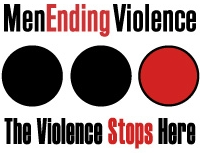
If Three Women Had Been Killed by a Stranger, There’d Be a Public Emergency
She Was Killed. But the System’s Response Wasn’t Built for Her.
Another woman is dead in British Columbia.
On July 7, RCMP responded to a domestic violence call in Surrey. Inside the home, a woman was found murdered. Her partner was shot and killed by police. Homicide detectives are now investigating her death. The Independent Investigations Office (IIO) is reviewing the police shooting.
And yet, in three official press releases—issued by the RCMP, IHIT and IIO—there is no mention of femicide. No use of the words gender-based violence or violence against women. No recognition that this was an intimate partner killing.
This is the third woman killed in British Columbia in less than a week in the context of intimate partner violence.
Bailey McCourt, murdered in Kelowna.
An unnamed woman, killed in Abbotsford in a suspected murder-suicide.
And now, another woman murdered during a domestic violence call in Surrey.
If these deaths had occurred in public, at random, or at the hands of strangers, the response would look very different. There would be province-wide coordination. Press briefings. Emergency plans. Urgent statements from leadership.
But when the perpetrator is a partner, a boyfriend, or a husband, the urgency fades. The language softens. And the woman’s life is quietly folded into a passive investigation—her story obscured by procedural tone and sanitized phrases.
This violence is not a mystery, and it doesn’t happen in isolation—it follows a pattern we’ve seen before, and too often, we ignore.
Forty-eight percent of women and girls in British Columbia have experienced intimate partner violence. That’s not a crisis. That’s a collapse.
In January 2025, Premier David Eby declared gender-based violence a national epidemic. He directed ministries to act urgently and in coordination, to reflect the interests and realities of survivors, and to ensure the justice system responds to the needs of those fleeing violence.
The Attorney General holds Dr. Kim Stanton’s report, which outlines clear, actionable steps that could have prevented deaths like these. The Gender Equity Office leads the Safe and Supported Action Plan, but with no cross-ministerial enforcement or oversight. Public Safety mandate doesn’t prioritize gender-based violence or violence against women at all.
No one appears responsible for coordinating action. While government waits for alignment, women are being murdered.
But declarations without structure are just headlines.
And while the government has the tools—like Dr. Kim Stanton’s report, which lays out clear, survivor-informed recommendations—implementation is uncertain.
There is no standardized lethality risk assessment in criminal or family law.
There is no cross-ministerial mechanism to track or prevent femicide.
And there is no provincial fatality review process to learn from women’s deaths—so the same patterns keep repeating.
BWSS is not waiting.
Through our #DesignedWithSurvivors initiative, we are creating a real-time, community-rooted framework for public safety: one that centres survivors, trains first responders, supports court navigation, and strengthens cross-sector collaboration. We are doing the work now—because every day without action is another risk. More than 100 organizations and individuals across B.C. have joined us. Because violence doesn’t end with a disclosure. It ends when the systems around her stop deferring action.
We urge media, government, and oversight bodies to stop describing these deaths in neutral terms and start confronting what they reveal: a system that recognizes violence too late and responds too little.
Femicide is not an anomaly. It is a measurable, preventable consequence of policy inaction and fragmented systems.
This moment calls for more than reflection. It demands a shift in power, practice, and political will. If gender-based violence is the emergency we say it is, then every institution must behave accordingly—by changing how it intervenes, how it invests, and who it listens to.
Women are not dying from lack of awareness. They are dying in the absence of infrastructure that knows how to protect them. The failure is not personal. It is structural.
Let this not be another week of mourning. Let it be a rupture in the status quo. A moment when we finally decide to build what has never fully existed: a safety net designed for her to survive.
To join #DesignedWithSurvivors email us at endingviolence@bwss.org




Can you please keep me up to date on all events and initiatives of #DesignedWithSurvivors project. If you have a media contact person could you also include their contact info.